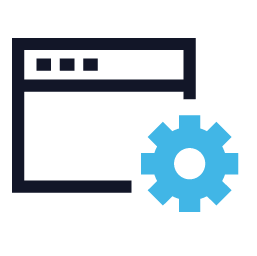Maturity Level 1: Evolve by Establishing the Bond between Program and Technology
Author: Anna Kornesczuk
 You took the time meticulously establishing a robust, targeted integrated risk management program, leveraging aspects of Maturity Level 0: Building a Risk Management Program throughout your journey. Your executive leadership, stakeholders, Board of Directors, Audit Committee, etc. are now informed of the company’s risk profile and are enabled to make risk-based decisions. You have created a machine that runs, and runs, and runs. However, its cogs are wearing out. Why is this?
You took the time meticulously establishing a robust, targeted integrated risk management program, leveraging aspects of Maturity Level 0: Building a Risk Management Program throughout your journey. Your executive leadership, stakeholders, Board of Directors, Audit Committee, etc. are now informed of the company’s risk profile and are enabled to make risk-based decisions. You have created a machine that runs, and runs, and runs. However, its cogs are wearing out. Why is this?
Even when your program is operating as intended, pain points will bubble up to the surface. Inefficiencies, redundancies, data integrity issues, communication breakdown, and lack of accountability (just to name a few) may all arise throughout the course of a program’s existence. Executing a risk management program without the support and facilitation of technology can be a grind day in and day out. By implementing your risk management program, you moved further away from being reactive, stale, siloed, unprepared, and vulnerable. risk management software will move you closer to always being proactive, integrated, informed, and resilient.
Forming a relationship between program and technology should not be entered into lightly. As such, we want to think through this decision in the context of why, who, what, and how to ensure all bases are covered.
![]()
Understand your company’s motivation to implement risk management technology – WHY…
- …is my current program difficult to execute?
- …would technology help?
- …now?
It is key to align on the catalyst and rationale for forming the bond between program and technology. Every program will need refinement, but why is technology the avenue by which to refine? Every aspect of a business could use more time and resources than they currently have, so why implement technology, and why now?
![]()
Establish the key stakeholders for implementation and adoption – WHO…
- …will sponsor, lead, and champion the technology?
- …will provide the resource support to implement technology?
- …will ensure objectives are met?
- …will ensure platform adoption?
- …will provide continuous support?
Like any successful relationship, the one between program and technology requires continued dedication and support. Establishing the foundation for ownership and accountability upfront will foster the sentiment of partnership and collaboration throughout the implementation, adoption, evolution, and refinement.
 Determine the solutions enabled by technology – WHAT…
Determine the solutions enabled by technology – WHAT…
- …workflows should be built?
- …data should be captured?
- …automation should be enabled?
- …reporting should be produced?
Identifying tangible requirements and executable outcomes sets the baseline on which the technology can be gauged a success or failure. This must happen up front, allowing for iteration and flexibility when necessary. The level of effort of each solution will inform the skill-set and time needed from required resources so effective project management and expectations can be set.
 Determine the means to enable your program through technology – HOW…
Determine the means to enable your program through technology – HOW…
- …will I ensure adoption?
- …will I continuously monitor and challenge?
- …will I know when to refine and evolve?
A stagnant, under utilized system quickly becomes antiquated. On the heels of implementation comes user experience and engagement. Providing a means for feedback, concerns, support, and refinement is essential to ensuring the relationship between program and technology, as well as the stakeholders who will rely so heavily on that bond, is strong and ever evolving.



